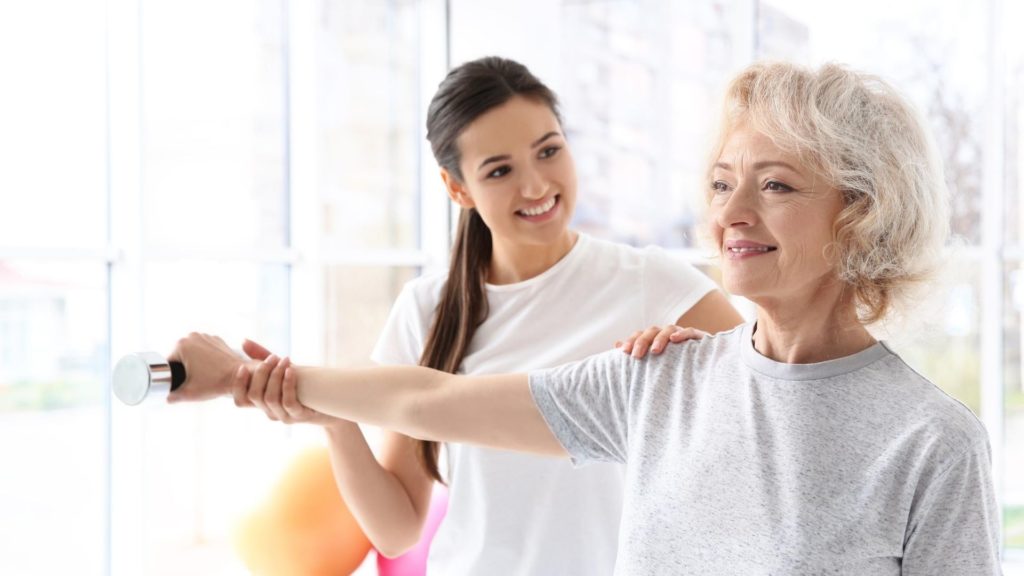Osteoporosis is, simply put, a disease of the bones. Whether because too much bone is lost or not enough made (or both), the bones will become weak and brittle. It is especially common in women and in people over the age of 50, with over 9 million Americans diagnosed already. According to the National Osteoporosis Foundation, an additional 48 million Americans have low bone density, which puts them at risk for developing osteoporosis.
But if it’s just a broken bone…?
Osteoporosis is more serious than the risk of breaking a bone or two: the most common breakage sites from osteoporosis victims are in the hip, spine, and wrist. Besides limiting mobility and function, broken bones can cause severe pain that may not dissipate. In extreme cases, it can also lead to other health problems and even death.
Diagnosis of Osteoporosis
It may be hard to detect osteoporosis if there isn’t a broken bone involved. It’s important to evaluate your medical history: a long line of weak or broken bones may point to a problem. To reach a diagnosis, your doctor will need to perform a bone density test, as well as possible FRAX scores, x-rays, and bone scans.
Medical history factors that may play into your diagnosis include your age and gender, as well as your history of broken bones. Menopause in women may also be a factor, as well as any history of eating disorders, menstrual problems, and medication use. Diet and exercise will also be discussed.
If you’re above the age of 50 and have begun losing height, you should notify your doctor. Often in men and women over the age of 50, height loss could be due to osteoporosis.
Prevention and Treatment
You’ve heard it too many times: prevention is the first step. Since osteoporosis largely affects women, it’s never too early to start prevention. But when have you ever heard of treatment and prevention being the same? For stronger bones, it certainly is:
Eat a well-balanced diet
that provides enough calcium and vitamin D. Each day, we lose calcium through our skin and nails, hair, even our sweat, so it’s important to replenish it. The amount of calcium your body needs varies depending on your age and gender, with about 1,000mg needed for women age 50 and younger. Sources of calcium include milk, soy milk, some juices, and breads. Calcium supplements are also an option. Vitamin D is required for your body to absorb calcium, so it’s pretty important! For the same age group, you need between 400 and 800 units daily. Getting vitamin D can be as easy as getting a little sunlight—but not too much. Foods that include vitamin D are mackerel, salmon, and tuna, as well as some dairy products and cereals. Supplements, again, are also an option if you have a severe deficiency.
Engage in bone-healthy exercise
Your food can’t do it alone! Weight bearing and muscle-strengthening exercises are the best types of work outs for your body and bones. Weight-bearing exercises can be either high- or low-impact, and range from dancing and hiking to tennis, aerobics, and elliptical machines. Muscle-strengthening exercises are using weights, bands, or machines to improve your muscles. Yoga and Pilates may also be beneficial to strength and balance, although they aren’t recommended for women who are at a high risk.
Finally, avoid smoking and limit alcohol consumption to two to three times per day.
Even if a diagnosis has already come your way, it’s never too late to start protecting your bones. Discuss with a doctor about modifying exercises to suit your weakened bones, and don’t be afraid to mix up your diet in favor of a healthier one.
While there are medications and alternative treatments for osteoporosis out there, it’s important to discuss these options with your doctor. Depending on the severity of your condition, as well as numerous other factors, eating right and exercising better may be the best for your body. If you think you may have osteoporosis, or would like more information, contact us today!

